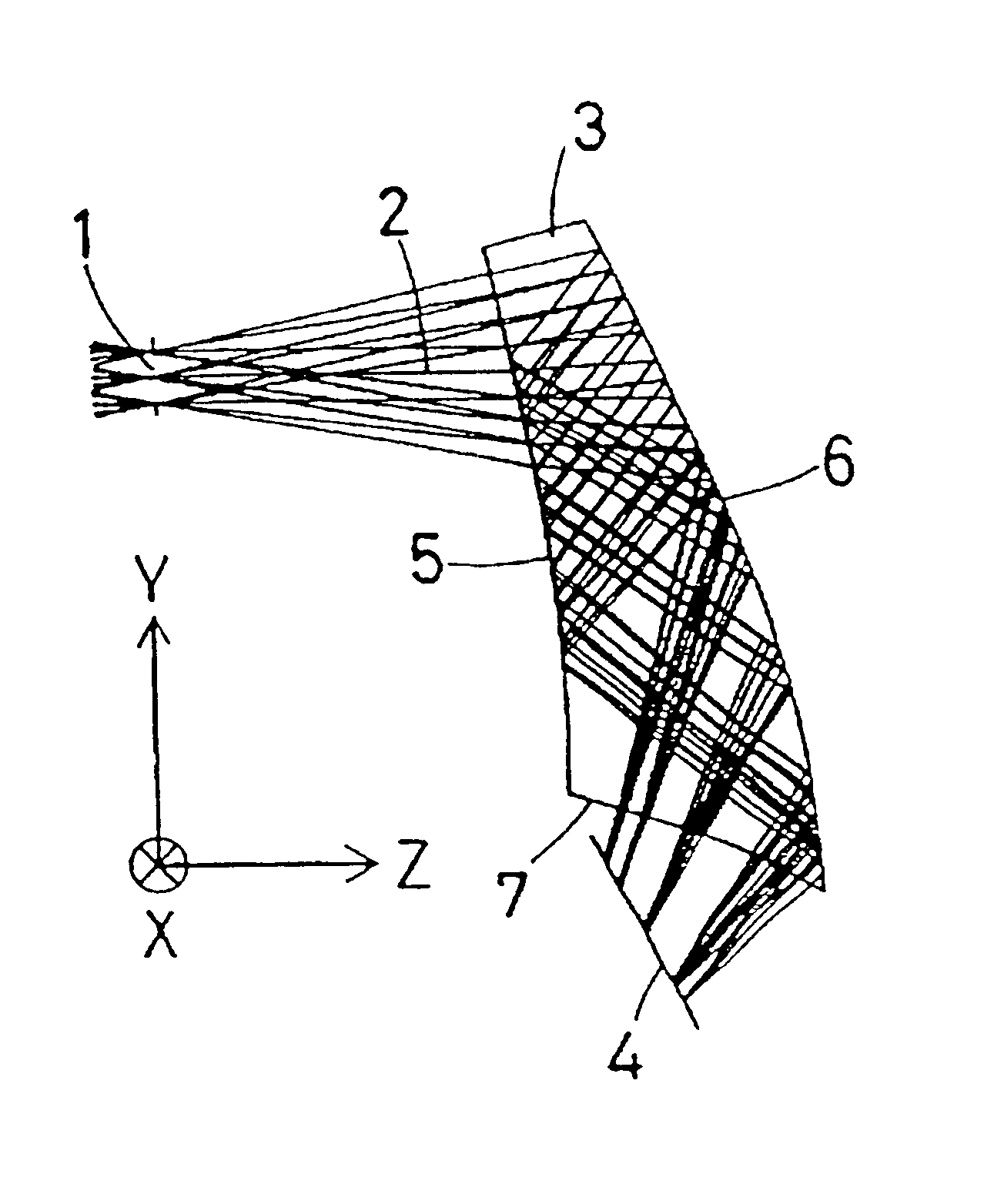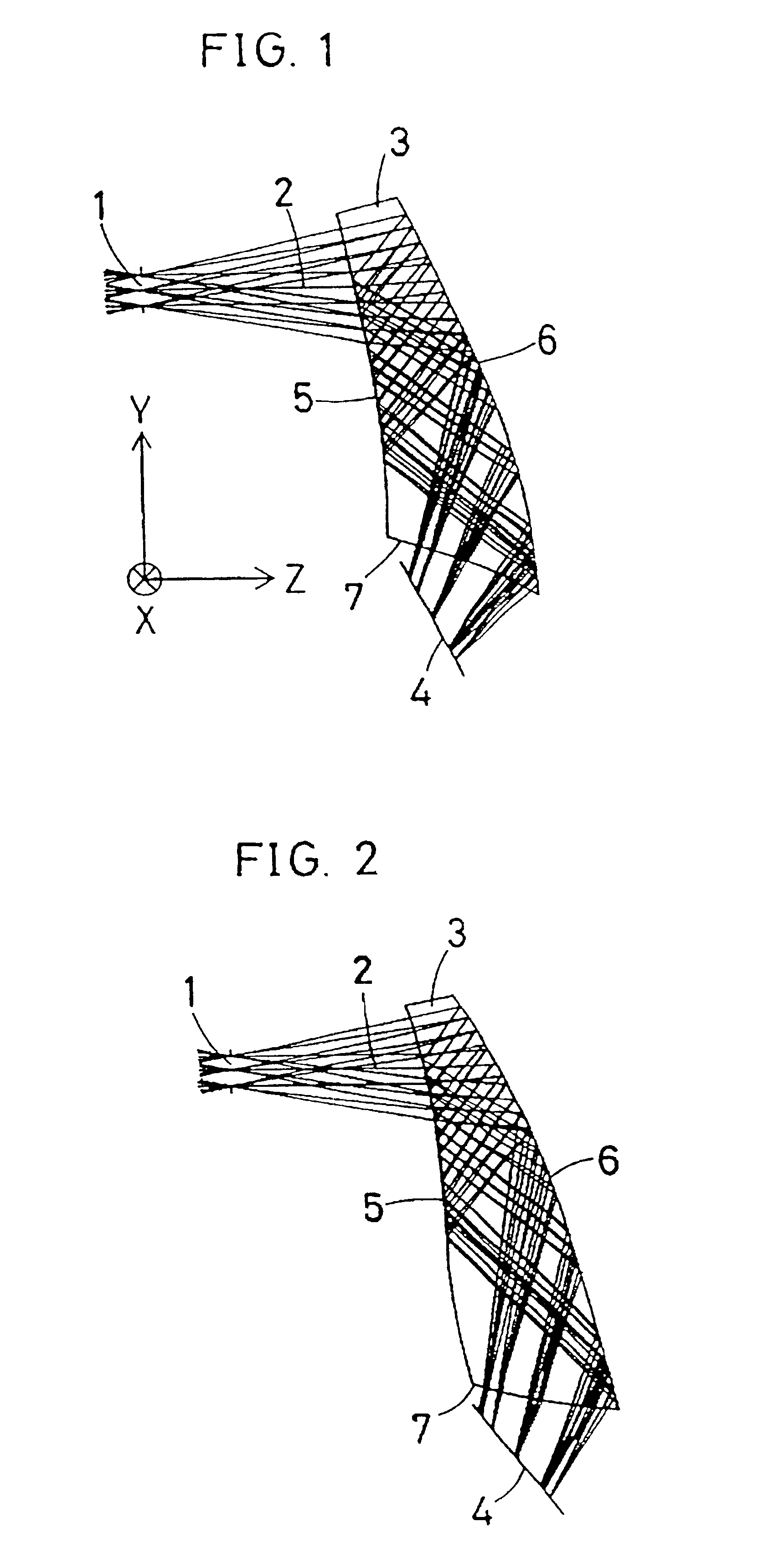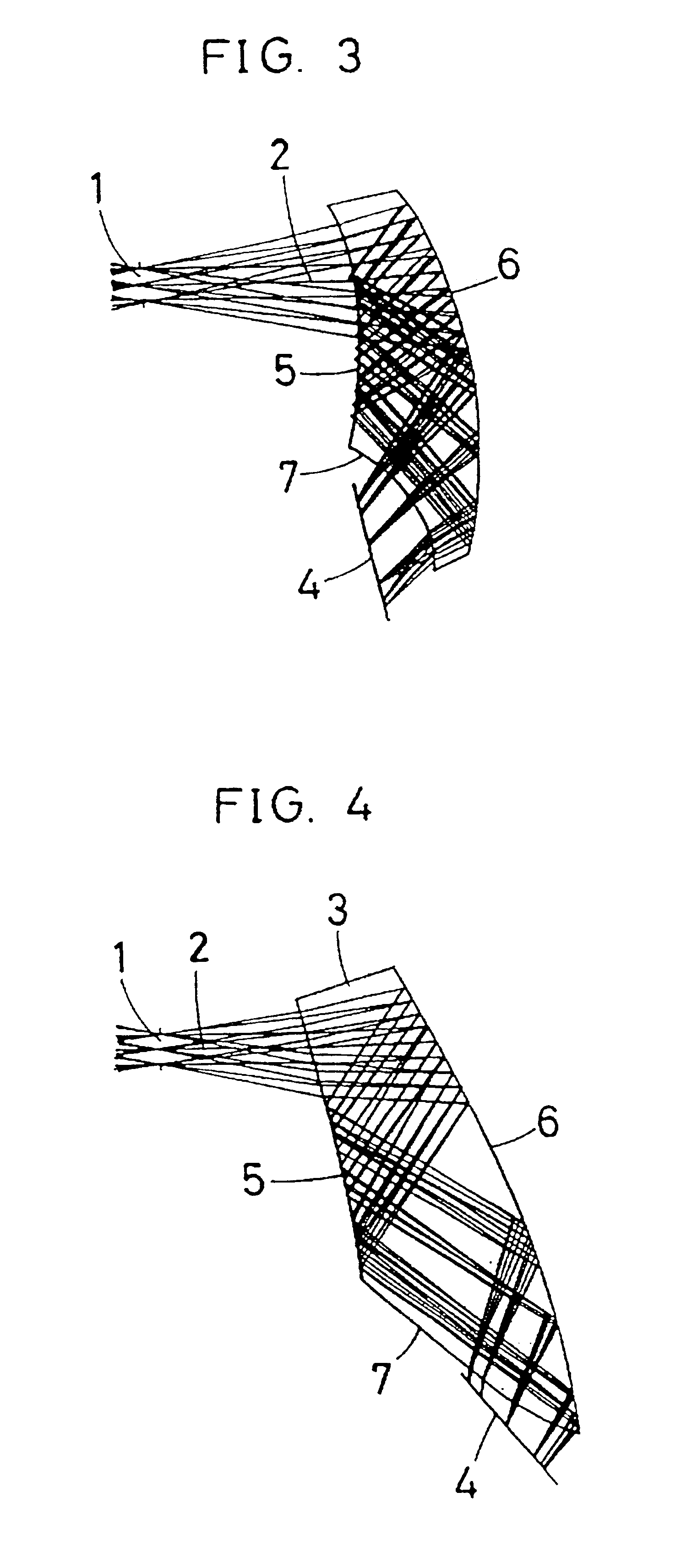Image display apparatus comprising an internally reflecting ocular optical system
- Summary
- Abstract
- Description
- Claims
- Application Information
AI Technical Summary
Benefits of technology
Problems solved by technology
Method used
Image
Examples
examples 1 to 10
of image display apparatuses according to the present invention will be described below with reference to the accompanying drawings.
Constituent parameters of each example will be shown later. In the following description, the surface Nos. are shown as ordinal numbers in backward tracing from an observer's pupil position 1 toward an image display device 4 .Iadd.(image plane).Iaddend.. A coordinate system is defined as follows: As shown in FIG. 1, with the observer's iris position 1 defined as the origin, the direction of an observer's visual axis 2 is taken as the Z-axis, where the direction toward an ocular optical system 3 from the origin is defined as the positive direction, and the vertical direction (as viewed from the observer's eyeball) which perpendicularly intersects the observer's visual axis 2 is taken as the Y-axis, where the upward direction is defined as the positive direction. Further, the horizontal direction (as viewed from the observer's eyeball) which perpendicular...
example 1
is one example of an ocular optical system comprising three surfaces as shown in the sectional view of FIG. 1. In this example, the horizontal field angle is 30.degree., while the vertical field angle is 22.8.degree., and the pupil diameter is 4 millimeters. The first surface (surface Nos. 2 and 4) 5, the second surface (surface Nos. 3 and 5) 6, and the third surface (surface No. 6) 7 are all anamorphic surfaces. Internal reflection at the first surface 5 is total reflection. Values for the conditions (1) to (13) are as follows:
example 2
is one example of an ocular optical system comprising three surfaces as shown in the sectional view of FIG. 2. In this example, the horizontal field angle is 30.degree., while the vertical field angle is 22.8.degree., and the pupil diameter is 4 millimeters. The first surface (surface Nos. 2 and 4) 5 and the second surface (surface Nos. 3 and 5) 6 are anamorphic surfaces, and the third surface (surface No. 6) 7 is a spherical surface. Internal reflection at the first surface 5 is total reflection. Values for the conditions (1) to (13) are as follows:
PUM
 Login to View More
Login to View More Abstract
Description
Claims
Application Information
 Login to View More
Login to View More - R&D
- Intellectual Property
- Life Sciences
- Materials
- Tech Scout
- Unparalleled Data Quality
- Higher Quality Content
- 60% Fewer Hallucinations
Browse by: Latest US Patents, China's latest patents, Technical Efficacy Thesaurus, Application Domain, Technology Topic, Popular Technical Reports.
© 2025 PatSnap. All rights reserved.Legal|Privacy policy|Modern Slavery Act Transparency Statement|Sitemap|About US| Contact US: help@patsnap.com



